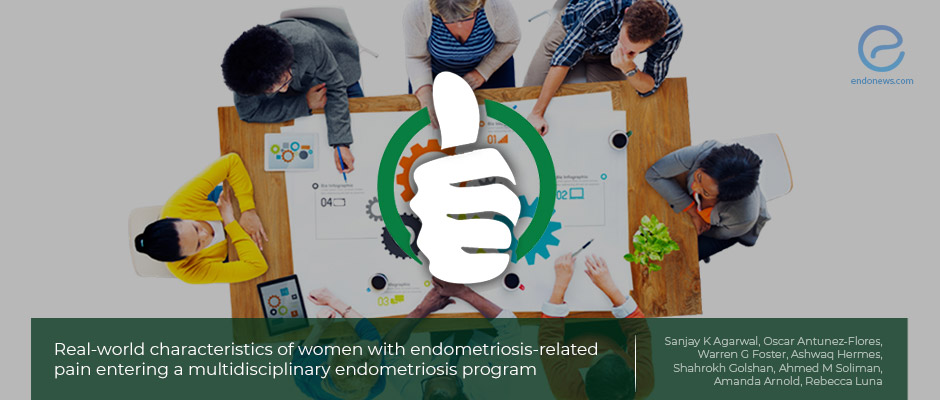Analysis of women with endometriosis-related pain before the multidisciplinary endometriosis care management
Jan 25, 2021
The traditional, single-provider model of care may not be sufficient for many endometriosis patients.
Key Points
Highlights:
- Alternative healthcare delivery models including multidisciplinary care are needed.
Importance:
- This study provides real-world baseline data that may be used in future studies to determine the efficacy of the multidisciplinary care approach in patients with endometriosis.
- The researchers also underline the importance to address non‐menstrual pelvic pain, which may be especially troublesome for patients.
What's done here:
- Researchers conducted a retrospective, cross-sectional study of patients enrolled for multidisciplinary care management for endometriosis at the University of California San Diego Center for Endometriosis Research and Treatment clinic.
- Demographics, clinical characteristics, and pain severity associated with dysmenorrhea, non‐menstrual pelvic pain, and dyspareunia were analyzed in 638 women with either surgically confirmed endometriosis or clinical symptoms consistent with endometriosis.
Key Results:
- More than half of the patients had pelvic pain for ≥ 5 years.
- Pain intensity was highest in patients with dysmenorrhea, followed by non‐menstrual pelvic pain, and dyspareunia.
- Non‐menstrual pelvic pain was the most strongly associated pain symptom with an increased number of prior physicians consulted.
- There was a significant correlation between total pelvic pain, patient age, and the number of previous healthcare providers; the number of previous providers and duration of pain; and duration of pain and years since diagnosis.
- Mean pain scores did not differ by age group for dyspareunia, with the highest mean pain scores reported among those
- An average of 10 years between the onset of pelvic pain and entry into the current endometriosis clinic was observed, regardless of previous diagnosis and intervention.
Limitations:
- The study is of cross-sectional, retrospective, and descriptive nature.
- The data collection was limited to clinically relevant variables, and there may be other important variables affecting pain severity that were not measured in this study.
- The data is from a population of women who may have had more severe symptoms than the overall population with endometriosis, hence they may not be generalizable to all other clinical settings.
Lay Summary
Endometriosis patients are generally treated by a single provider and they frequently report dissatisfaction with care. To decrease diagnostic delays, improve pain management, and promote patient satisfaction, multidisciplinary endometriosis centers emerged. But, baseline data assessing the efficacy of the multidisciplinary approach are lacking.
A recent study led by researchers from the USA and Canada analyzed the demographics, clinical characteristics, and pelvic pain symptoms in women treated within the single-provider model of care.
In their retrospective, cross-sectional study, Agarwal et al. analyzed 638 endometriosis patients enrolled for multidisciplinary care management for endometriosis at the University of California San Diego Center for Endometriosis Research and Treatment clinic between 2011 and 2018.
More than half of the patients were observed to have pelvic pain for ≥ 5 years. Pain intensity was highest in patients with dysmenorrhea. The most strongly associated pain symptom with an increased number of prior physicians consulted was non-menstrual pelvic pain. A significant correlation between total pelvic pain and patient age and the number of previous healthcare providers was seen. Mean pain scores did not differ by age group for dyspareunia. The duration between the onset of pelvic pain and entry into the multidisciplinary endometriosis clinic regardless of previous diagnosis and intervention was 10 years on average.
The importance of this study is that it provides real-world baseline data that may be used in future studies to determine the efficacy of the multidisciplinary care approach in patients with endometriosis. According to this data, the traditional, single-provider model of care may not be sufficient for some endometriosis patients. Consequently, the authors underlined the need for healthcare delivery models including multidisciplinary care.
This study has recently been published in the journal BMC Women’s Health.
Research Source: https://pubmed.ncbi.nlm.nih.gov/33413295/
endometriosis pain real‐word evidence multidisciplinary approach

